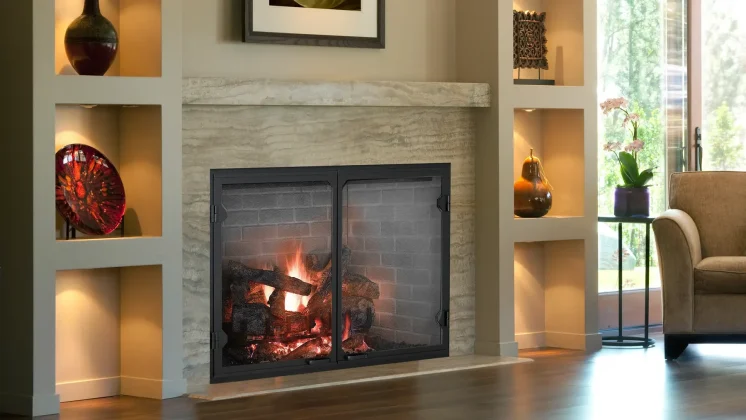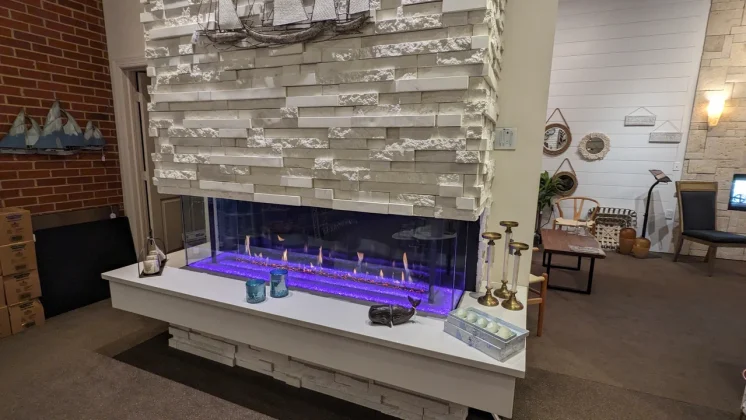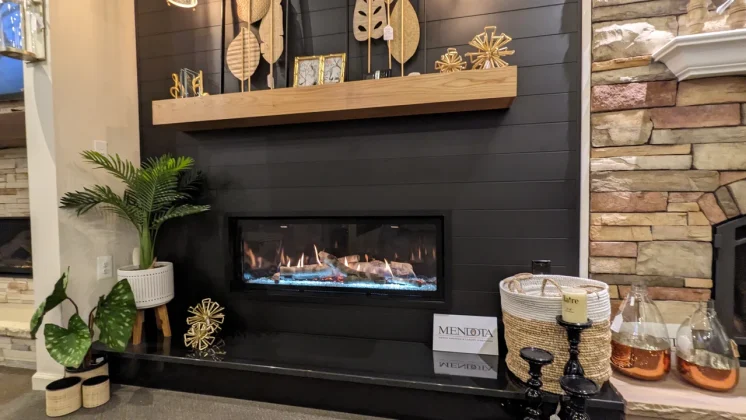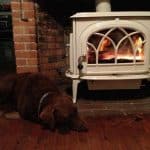An open wood or fire burning stove is a very attractive central feature of every home. They are available in different designs, ranging from classic to contemporary styles, fitting both old and new homes. As gorgeous as a wood-burning fireplace might be, many people often overlook the importance of using the correct type of fuel and best wood burning practices.
If you have an open wood or fire stove, the following best wood burning practices will help you enjoy a smoke-free home every time.
-
Use Hardwoods Only
The best fuel for a wood stove is a very dry hardwood. Kiln-dry woods are excellent fuel for fireplaces as well as split hardwood that has dried out over a couple of years. Splitting a wood allows air to penetrate the wood and make it dry out. Avoid using the whole log as they will contain moisture and will burn less efficiently while producing a large amount of smoke.
Only hardwoods should be burnt for the best wood-burning experience. Softwoods like pine contain a large proportion of resin and will burn only or a short period of time. If you use a contemporary fireplace that has glass doors, softwood can blacken the screen very quickly and may also block the chimney.
-
Use Quality Wood at All Time
Avoid buying firewood from supermarkets, garages or smaller shops. Usually, these logs usually weren’t properly dried and seasoned. Thus, it can cause a lot of smoke in the house. They can also contain a mixture of soft and hardwood, making it unreliable for use.
In the same vein, avoid using random scrap wood that you find laying around as it can be unsafe. Although it may be tempting to burn, especially when there is nothing to burn at home, you should avoid it as much as possible. These types of random wood may include scraps from old fence panels and damaged furniture at home. Remember that these woods have been treated with chemicals and may produce a higher quantity of smoke. Similarly, the chemicals present in the wood can damage the metal of the chimney.
-
Maintain Your Fireplace or Stove
Best wood-burning practices also involve cleaning and maintenance of your stove or fireplace. Clean the interior of your stove by vacuuming the ashes frequently. Make sure you protect your lungs and skin using a dust mask or and gloves. More so, remove the soot or creosote buildup that you can see on the walls and lower parts of the chimney. If you cannot do the cleaning, you may consider hiring a professional fireplace and chimney cleaners for efficiency.
-
Hire a Chimney Sweep
Chimneys should also be cleaned and inspected like the stove. Typically, a chimney should be swept at least once a year. Thousands of fire outbreaks in the past start in the chimney mostly due to improper maintenance. Some woods produce creosote, a flammable tar like substance, which causes a fire in the chimney. For maximum effectiveness and efficiency, you should consider hiring Fireplaces Plus, we are NFI Certified Hearth Professionals.
-
Be Aware of the Warning Signs
Before your fireplace or chimney possibly breaks down, it must first show some signs. Watch out for these signs and take the proper step where necessary. The most common sign of possible stove or chimney problem is excessive smoke. Although inefficient wood burning also causes smoke, excessive smoke, especially when you use the best wood burning practices, can be a sign of a faulty damper. It can also be an indication of soot accumulation, creosote buildup or debris in the chimney. Check out this issue and don’t hesitate to seek a professional assistance.
-
Consider a Fireplace Insert
If you are using an open, masonry built wood-burning fireplace, you should consider installing a fireplace insert. These fireplaces can use up to 300 cubic feet of heated room air outside the home per minute, as reported by the U.S. Department of Energy. Similarly, the fireplace inserts also draw cold air into the home through the doors and windows while burning. There are several brands and products of fireplace insert available in the market. These devices are designed with improved technology that effectively burns and re-burn wood, smoke, and gas. Consequent upon this effective nature, the likelihood of creosote buildup is significantly reduced.
Best Wood Burning Practices at a Glance
To get the best level of efficiency from your wood-burning fireplaces, simply follow these steps.
- Avoid burning softwood or woods treated with chemicals
- Avoid using scrap wood from damaged home furniture or other sources
- Burn only hardwood. Examples of hardwood are Elm, Ash, Apple, Oak, and Silver Birch
- Consider installing a fireplace insert
- Frequently clean your chimney and fireplace
- Prioritize using dried, well-seasoned, and split wood as fuel
- Refuel sufficiently before using the fireplace
- Use clean newspaper and dry kindling or firefighters to start fires
Meanwhile, the burning efficiency of your fireplace depends on its type. Open fireplaces, for instance, are less efficient as closed fireplaces. They can burn about six logs every night with about 20% efficiency. Closed fireplaces, on the other hand, are more efficient in wood burning – at a rate of about 85% – whilst also producing more heat.
What Not to Burn
For maximum wood-burning efficiency, there are some materials you should not burn. The typically produce toxic chemicals which do not only damage your fireplace but also make the air unfit for you. These materials include:
- Asbestos, rubber, plastic, manure and animal remains
- Household wastes like plastics, cardboard, foam, colored ink, clothes, fabrics, metals, and other waste products.
- Painted, coated, sprayed, treated, and scrap woods
- Plywood, ocean driftwood, particle board or any wood with glue on it
- Wet, diseased, rotted or moldy wood
Bottom Line
Wood-burning fireplaces are a great addition to the house. It can add a sort of attractive central feature to every home. However, when burning woods, there are some certain practices you should adopt for maximum efficiency. We hope this article helps a lot.






